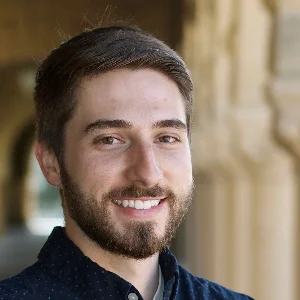Nathan Stacey teaches the course “Physics of Space Systems I” in the Applied Physics Program at Johns Hopkins University. Nathan’s full-time employment is at True Anomaly, a space defense startup, where he works as a senior guidance, navigation, and control (GNC) engineer. At True Anomaly, Nathan develops advanced algorithms and software for spacecraft GNC. Prior to True Anomaly, Nathan worked at the NASA Goddard Spaceflight Center for three years. At NASA, he was the product development lead of the Goddard Enhanced Onboard Navigation System (GEONS), which includes flight software for onboard spacecraft navigation as well as software tools for simulation and analysis of navigation systems on the ground. Nathan also served as a navigation expert and software developer at NASA for the autonomous Navigation, Guidance, and Control (autoNGC) project, which is baselined to provide autonomous GNC for multiple upcoming missions. Before working full-time at NASA, Nathan completed internships at NASA, the Space Dynamics Laboratory (SDL), and Northrop Grumman.
Nathan received a B.S. degree in mechanical engineering from Utah State University in 2016. At Utah State, he led humanitarian projects in Mexico and Peru as the president of the Engineers Without Borders chapter. In 2018, Nathan received an M.S. degree in aeronautics and astronautics from Stanford University where he also received a Ph.D. in the same field in 2022. At Stanford, Nathan developed novel algorithms for more computationally efficient and robust spacecraft navigation to support autonomous operations. He also developed a new algorithm for improved shape modeling of small celestial bodies and developed a novel multi-spacecraft mission concept to autonomously navigate about an asteroid and simultaneously characterize its gravity field, rotational motion, and 3D shape.
Nathan has received several notable honors. He was given the William F. Ballhaus Prize for the “Best Ph.D. Thesis” in the Stanford Department of Aeronautics and Astronautics. At Stanford, he also received prestigious graduate fellowships from the National Science Foundation (NSF), the Achievement Rewards for College Scientists (ARCS) Foundation, and the Stanford Enhancing Diversity in Graduate Education (EDGE) program. At Utah State, Nathan was selected from the entire undergraduate student body as the 2016 Scholar of the Year.
In his free time, Nathan loves spending time with his wife and son, including running and hiking. He enjoys reading physics and science fiction books such as The Three Body Problem series and books by Andy Weir and Leonard Susskind. He also loves cheering on his wife who has broken two Guinness World Records for women’s pull-ups.
Education History
- B.S., Mechanical Engineering, Utah State University
- M.S., Aeronautics and Astronautics, Stanford University
- Ph.D., Aeronautics and Astronautics, Stanford University
Work Experience
Aerospace Engineer, NASA Goddard Space Flight Center
Publications
B. Ashman, L. Winternitz, N. Stacey, A. Long, M. Schmidt, G. Ryden, A. Liounis, S. Price, W. Bamford, S. Hur-Diaz, M. Hassouneh, L. Greenlee, “Autonomous Navigation of a Lunar Relay Using GNSS and Other Measurements,” ION GNSS+ Conference, Baltimore, MD, 2024.
A. Long, D. Gaylor, N. Stacey, “Goddard Enhanced Onboard Navigation System (GEONS) Mathematical Specifications,” NASA Technical Reports Server, Document ID: 20240004259, https://ntrs.nasa.gov/citations/20240004259, 2024.
N. Stacey, “Robust Autonomous Spacecraft Navigation and Environment Characterization,” Stanford University, PhD Thesis, 2022. William F. Ballhaus Prize for best PhD thesis in the Stanford Department of Aeronautics and Astronautics.
K. Dennison, N. Stacey, and S. D’Amico, “Autonomous Asteroid Characterization through Nanosatellite Swarming,” Transactions on Aerospace and Electronic Systems, 2022.
L. Cassinis, T. Park, N. Stacey, et al., “Leveraging Neural Network Uncertainty in Adaptive Unscented Kalman Filter for Spacecraft Pose Estimation,” Advances in Space Research, 2022.
N. Stacey, K. Dennison, and S. D’Amico, “Autonomous Asteroid Characterization through Nanosatellite Swarming,” IEEE Aerospace Conference, Big Sky, MT, Mar. 5-12, 2022.
N. Stacey and S. D’Amico, “Process Noise Covariance Modeling for Absolute and Relative Orbits,” Acta Astronautica, 2022.
N. Stacey and S. D’Amico, “Process Noise Covariance Modeling for Absolute and Relative Orbit Determination,” AAS/AIAA Space Flight Mechanics Meeting, Virtual, Feb. 1-3, 2021.
N. Stacey and S. D’Amico, “Adaptive and Dynamically Constrained Process Noise Estimation for Orbit Determination,” IEEE Transactions on Aerospace and Electronic Systems, vol. 57, no. 5, pp. 2920-2937, doi: 10.1109/TAES.2021.3074205, Oct. 2021.
N. Stacey and S. D’Amico, “Adaptive and Dynamically Constrained Process Noise Estimation for Orbit Determination,” AAS/AIAA Astrodynamics Specialist Conference, Portland, ME, Aug. 11-15, 2019.
N. Stacey and S. D’Amico, “Autonomous Swarming for Simultaneous Navigation and Asteroid Characterization,” AAS/AIAA Astrodynamics Specialist Conference, Snowbird, UT, Aug. 19-23, 2018.
K. Fujimoto, N. Stacey, and J. Turner, “Stereoscopic Image Velocimetry as a Measurement Type for Autonomous Asteroid Gravimetry,” AIAA/AAS Astrodynamics Specialist Conference, Long Beach, CA, Sept. 12-15, 2016.
Honors and Awards
- William F. Ballhaus Prize for Best PhD Thesis, Stanford Departmental Honor (2023)
- NASA Goddard Distinguished Employee Performance Review Award (2023)
- Excellent Reviewer of The Journal of Guidance, Control, and Dynamics (2022)
- NASA Goddard Distinguished Employee Performance Review Award (2021)
- Hispanic Scholarship Fund Graduate Scholarship (2020)
- Stanford Graduate Research Fellowship Funded by ARCS Foundation (2019)
- Stanford Enhancing Diversity in Graduate Education Doctoral Fellowship (2019)
- Hispanic Scholarship Fund Graduate Scholarship (2019)
- National Science Foundation (NSF) Graduate Research Fellowship (2016)
- Society of Hispanic Professional Engineers Graduate Scholarship (2016)
- Hispanic Scholarship Fund Graduate Scholarship (2016)
- USU Undergraduate Scholar of the Year (2016)
- USU College of Engineering Outstanding Senior of the Year (2016)
- USU Undergraduate Research and Creative Opportunities Grant (2015)
- The Society of Hispanic Professional Engineers Undergraduate Scholarship (2015)
- USU Department of Mechanical and Aerospace Engineering Scholarship (2015)
- Jack B. and Bonnie F. Parson Scholarship for academic achievement (2014)
- USU A-Pin (2014)
